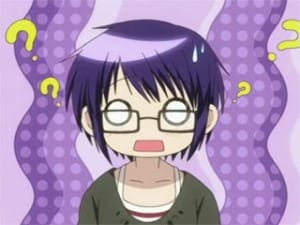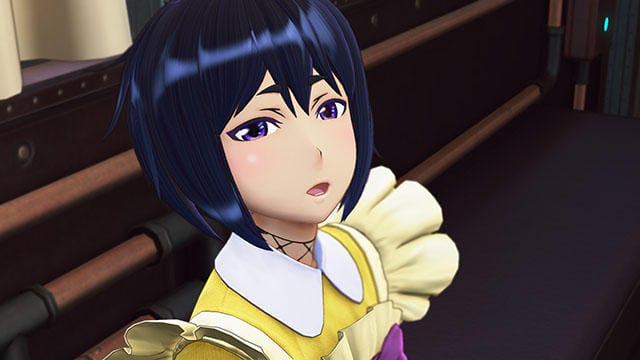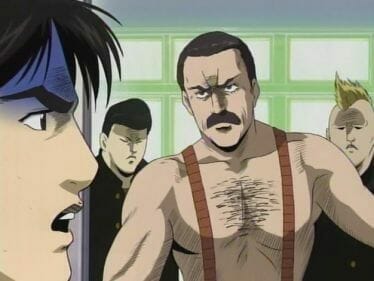 With the way many anime fans talk with each other, it can sometimes sound like a completely different language. For new fans, this can be particularly daunting. Even experienced fans tend to be surprised by the occasional outmoded word, or new term that arises. So, I hope that this list provides insight into the strange language of the subculture for both old and new members.
With the way many anime fans talk with each other, it can sometimes sound like a completely different language. For new fans, this can be particularly daunting. Even experienced fans tend to be surprised by the occasional outmoded word, or new term that arises. So, I hope that this list provides insight into the strange language of the subculture for both old and new members.
ANIME
- Dub: Short for “English dubbed”, used to describe anime titles that have their original dialogue track replaced by an English adaptation.
- Eyecatch: An illustration or short animation sequence that plays before and after a commercial break on Japanese TV. These are similar to Adult Swim’s bump sequences in their function, but often only run at the show’s “mid-episode” break.
- Fansub: Short for “fan-subtitled”, refers to anime titles that were subtitled and distributed by fans.
- OVA: Short for “Original Video Animation” – describes anime titles that were released directly to video, with no prior TV run.
- Raw: Used to describe untranslated anime or manga titles.
- Sub: Short for “subtitled”, used to describe anime titles presented with their original Japanese dialogue, and English subtitles.
MANGA
- Doujinshi: Self-published Japanese comics. Many doujinshi are based on, or shamelessly use characters from popular anime or manga titles. However, there are also many that are original titles, as well.
- Manga: Japanese comics.
- Scanlation: Short for “scanned translation”, refers to manga titles that were scanned, translated, and distributed by fans.
GENRES
- Hentai: Blanket term to describe pornographic anime or manga in the west. In Japan, the word hentai is defined as “pervert.”
- Josei: Anime and manga whose key demographic is females, ages 18 to 30.
- Mahou Shoujo: Sub-genre of fantasy anime that pits super-powered young girls against the forces of evil.
- Seinen: Anime and manga whose key demographic is males, ages 18 to 30.
- Sentai: Action shows that feature a team of costumed superheroes, which often pilot a vehicle or mecha.
- Shoujo: Manga or anime whose key demographic is females, ages 10 to 18.
- Shounen: Manga or anime whose key demographic is males, ages 10 to 18.
- Shoujo Ai: Manga or anime that focus on the spiritual and emotional aspects of lesbian relationships.
- Yaoi Manga or anime that focus on homoerotic male relationships. In Japan, the title is outmoded, and has pretty much been replaced by Boys’ Love
- Yuri: Manga or anime that focuses on lesbian relationships.
HONORIFICS
- -chan: A diminutive honorific, often used as a term of endearment. To use the term in regards to a superior can be seen as rude and condescending.
- -kun: A term often used when referring to someone of a lower status, or when an adult regards a child. Typically used in reference to boys.
- -kohai: Literally translates to “junior”, often used to refer to either a protege, or an underclassmen. Can be used as a stand-alone term.
- -sama: A more respectful version of -san, often used to address superiors, or those who are of a much higher rank. To refer to oneself with the title is perceived as arrogant.
- -san: Most common honorific, can best be likened to “Mr.”, “Mrs.”, or “Ms.”
- -senpai: Literally translates to “senior”, the term is typically used to describe a mentor figure, or an upperclassman. Can be sued as a stand-alone term.
- -sensei: Often used to address doctors, teachers, politicians, or other educated individuals. The term can also be used to describe an individual with mastery in an art form or other skills. The term is also used in reference to the master of a martial arts dojo. Sensei can be used as a stand-alone title.
- -shi: Very formal term, used in regards to an individual that the speaker has never met.
JARGON
- Bank Cel: Cels that are used many times over the course of a show’s run. Popular examples are transformation sequences in magical girl shows,
- Bishounen: Literally “pretty boy.” refers to attractive male characters. Some shorten to “bishie.”
- CGI/CG: Refers to computer-generated effects used in anime.
- Chibi: In America, term is interchangeable with Super-Deformed: an art style in which characters are drawn in an exaggerated, often cute way.
- Con: Short for “convention”, refers to large gatherings of fans that share a common interest at a pre-arranged date and time. Prominent cons in the US include Otakon, Anime Expo, and Anime Boston.
- Cosplay: Short for “costume play”, refers to the act of dressing up as an anime, manga, video game, etc. character.
- Douga: Pencil sketch used in the production of cels.
- Drama CD: A CD that is more akin to a radio program than a musical CD. Features plot and dialogue, and pushes forward in a pace similar to the typical anime episode.
- Ecchi: Pronounced “eh-chee”, refers to anime or manga titles that feature non-graphic sexual content, often in a comedic context. Doesn’t feature overt sex.
- Eroge: Short for “Erotic Game” – refers to Japanese games, typically visual novels, that feature erotic, often pornographic content.
- Facevault: Comedic effect in which a character falls on his face in sheer aggravation or exasperation.
- Fanservice: Refers to artificial or self-aware elements of an anime title that are placed in to please fans. This can take the form of obscure references, a flash of cleavage, or other unusual elements.
- Genga: Drawings made by senior animators that are used as “guides” for the animation team. Never used in actual cel production.
- Glomp: A tight hug that often borders on a tackle. Often used by overactive female characters in comedic anime and manga.
- Honorific: In Japanese, the suffix attached to a person’s name to denote relationship or perceived respect.
- Huggle: A cross between hugging and cuddling
- Key Cel: The first or last frame in a sequence – usually drawn by more talented artists, and rarely done by people outside of the main production house. These are often of higher artistic quality than standard cels, as they’re used as “guide” cels for the rest of the animation team.
- Mecha: Refers to a class of vehicles that are typically bipedal and controlled by a pilot.
- OST: Short for “Original Soundtrack”, refers to CD soundtracks of shows, films, and the like.
- Otaku: Refers to an obsessive fan of anime or manga. The label in America is used in a similar context to “Trekkie”, with Star Trek fans. However, the term does have a point of contention, as some use the term as a positive identifier, and some use it as with a negative connotation (more akin to weeaboo). In Japan, the word has a far more negative connotation. Typically, the word refers to someone so invested into their niche hobby that it affects their social standing, or their own well-being. In Japan, otaku are stereotyped as undesirable individuals, with poor social skills and obsessions in strange, potentially boring topics.
- R1: Abbreviation for “Region 1”, or the DVD region for the US and Canada. This is often used when describing distributors in the western market.
- Rilezu: Hand-painted cels based on production sketches. These are not used in the production of an anime cel, but rather sold as promotional items.
- Seiyuu: Used when referring to original Japanese voice actors or actresses on an anime title.
- Shipping: Fan fiction works that place characters into a romantic relationship. Often plays off of existing perceived chemistry. This term technically CAN be used for platonic relationships, but it exceedingly rare.
- Slash: Fan fiction that focuses on male homosexual pairings.
- Tsundere: Refers to a character that starts out cold toward other people, before warming up to show a softer side. Typically used to describe female characters.
- Waifu: Japanese pronunciation of “wife.” Often used by obsessive fans when speaking of a favorite female character, often seen as unsettling as it could be taken as delusional.
- Weeaboo: Derogatory or insulting term used to describe somebody completely obsessed with Japanese culture (or anime culture). Weeaboos often go as far as to try to emulate the characters they see on TV. Hallmarks of the stereotypical weeaboo include random use of badly-pronounced Japanese words.
TOYS & COLLECTABLES
- Action Figure: A (typically) plastic figure of a character from a film, TV show, etc. that features moving parts. Action figures are often marketed primarily toward the collector market.
- Figma: Action figure line produced by Max Factory and distributed by Good Smile Company. These figures are often based on bishoujo anime characters, and often feature numerous accessories, including interchangeable faces. Fairly fragile, due to the high amount of articulation and small joint sizes.
- Gashapon: “Capsule Toy,” or toys sold in plastic capsules via vending machines. These can be anything from toy cars, to 5″ figures, often based on popular anime, manga, or video game titles. The word is trademarked by Bandai, though it is a common term. The word is an onomatopoeia of the sounds of the machine crank turning, and the capsule dropping into the vending receptacle.
- Gunpla: Refers to plastic models that feature characters from Mobile Suit Gundam. The word is a combination of the words Gundam and Plastic.
- Nendoroid: Brand of figures created by Good Smile Company. These are often replicas of anime characters that are roughly 4 inches tall, and feature articulated, interchangeable body parts and faces. The characters are often presented in super-deformed style.
- Shokugan: Literally “candy toy”, a miniature PVC figure sold sealed in a cardboard box, bundled with one to three pieces of candy. Shokugan are known for having greater detail than the gashapon toys, and can be found covering everything from anime characters to animals. Typically, these do not feature movable parts.











